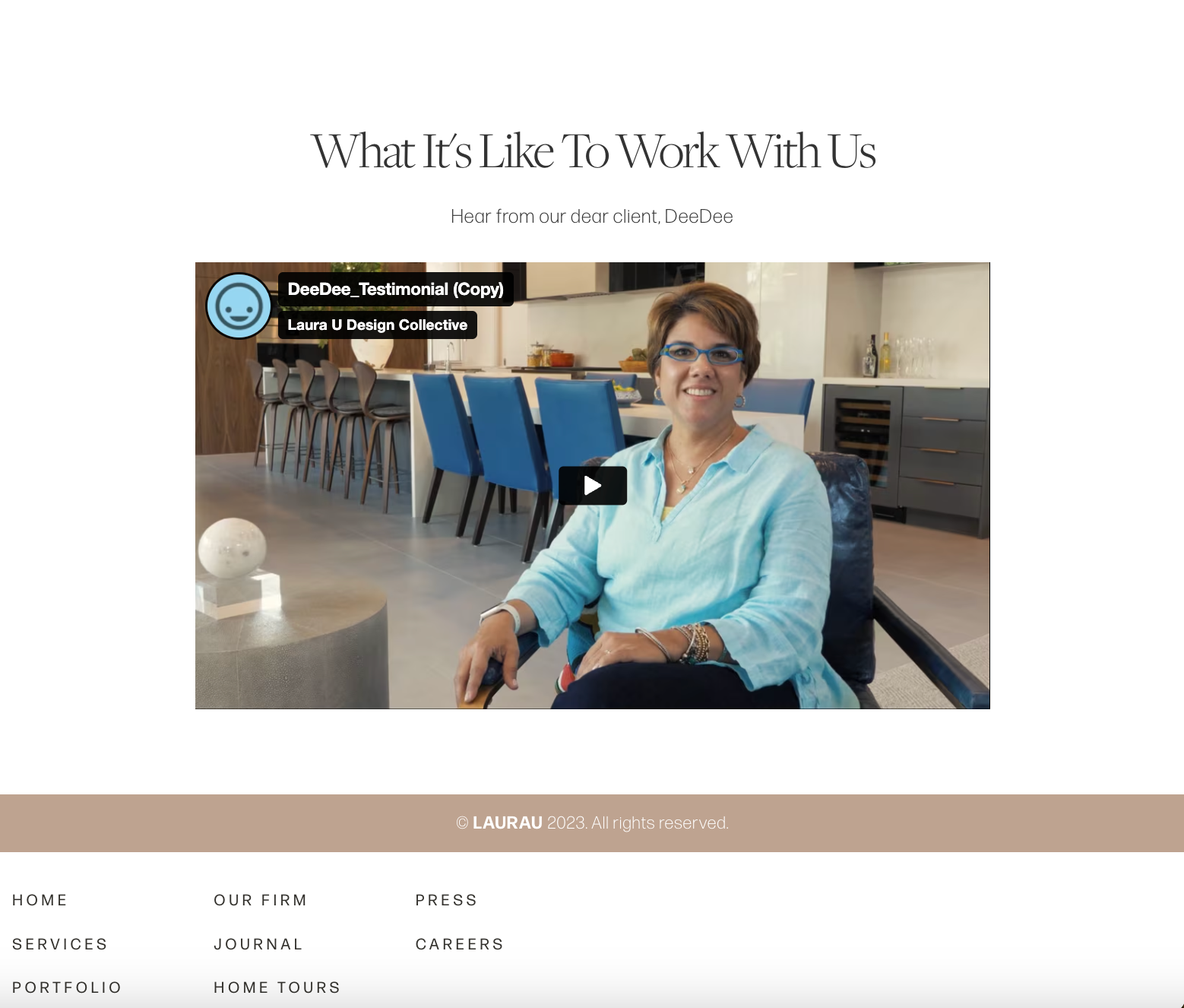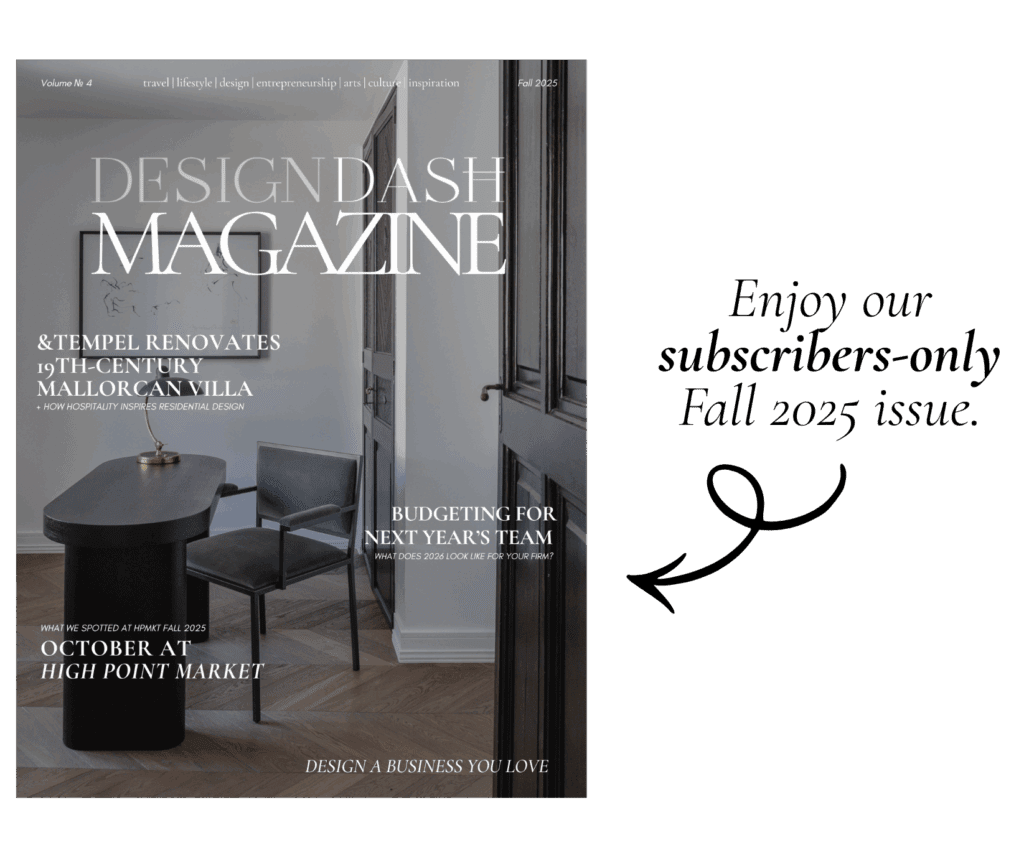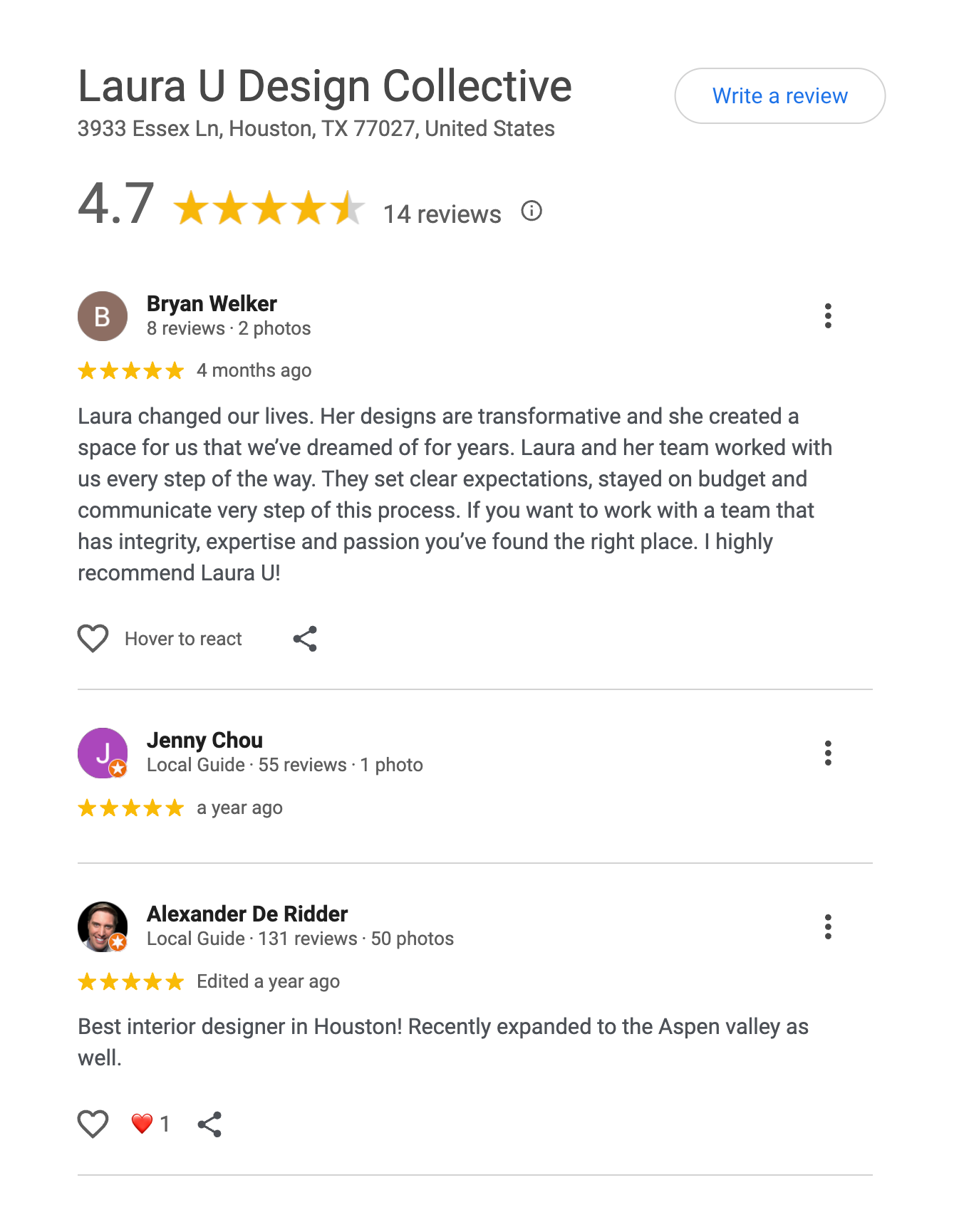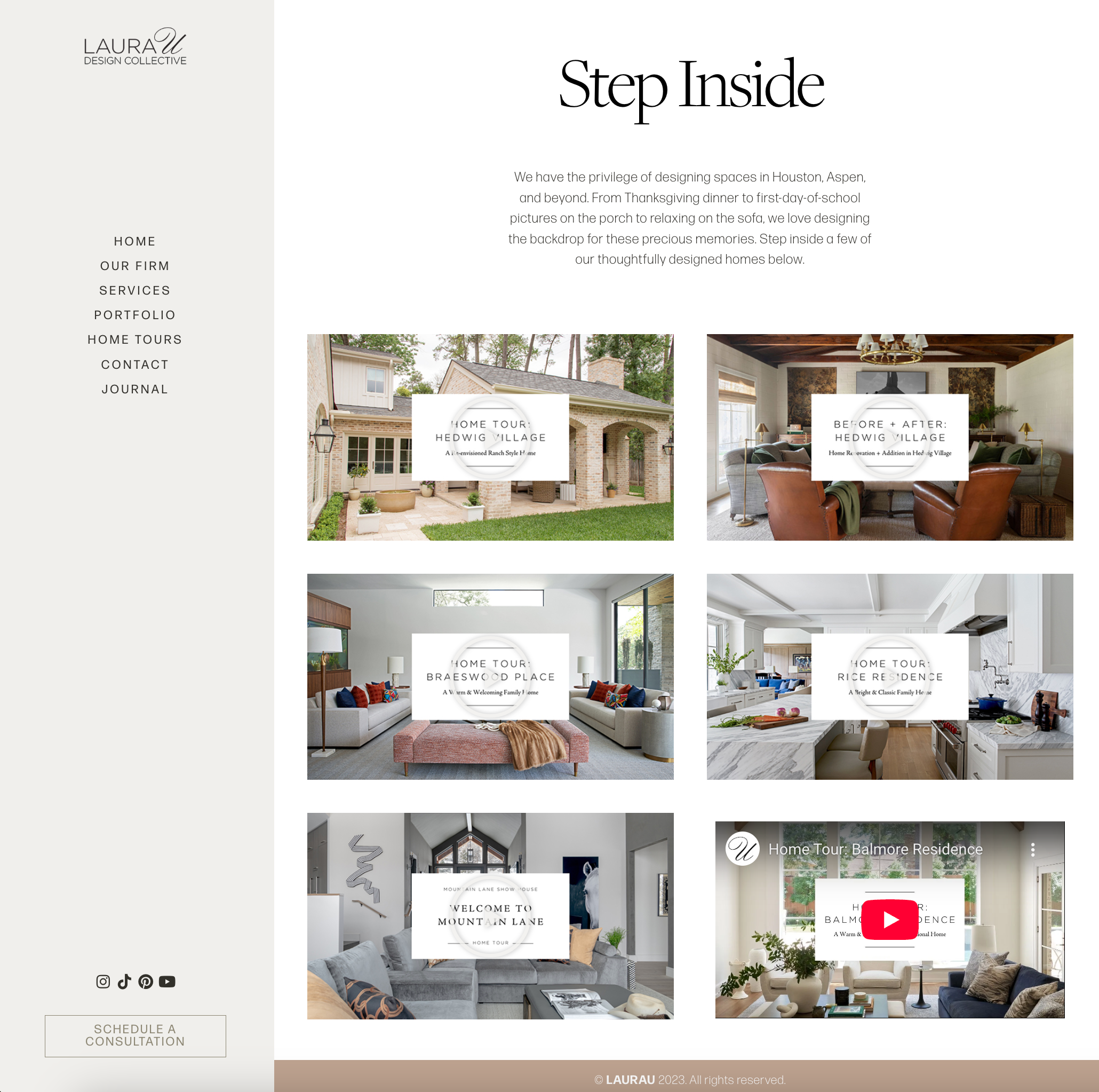
How to Use Testimonials for Local SEO on Your Design Website
Summary
Sure, testimonials are compliments from past clients, but they’re also one of the simplest ways to improve your visibility in local searches. By placing them in the right parts of your site, keeping them current, and making sure they highlight project types and neighborhoods, you strengthen both your credibility and your connection to the communities where you work.
Reflection Questions
Where on my website could testimonials have the biggest impact: homepage, service pages, or location-specific landing pages?
Do my current testimonials include place names, project types, or other details that signal local relevance to search engines?
How can I update the way I present testimonials (text, visuals, video) to make them more engaging and effective for today’s clients?
Journal Prompt
Think of your last three completed projects. How did those clients describe their experience of working with you? Write down their words as if they were testimonials. Then, consider which details (neighborhoods, project types, design styles) could be highlighted to strengthen both the human story and your local SEO.
Interior designers know that the way a room makes someone feel is just as important as the way it looks. Your website works the same way. Yes, your portfolio shows off your firm’s beautifully executed interiors, but it’s the voices of your clients that make those spaces feel real, meaningful, and applicable to PNCs. Their testimonials shouldn’t solely validate your expertise but also anchor your reputation to a specific place, which is exactly what helps your firm surface in local searches.
Search engines value authenticity. A well written testimonial that mentions a neighborhood, a city, or even the type of project naturally signals that you are a go-to designer for that area. When used with intention, testimonials elevate your website from a digital portfolio into a living, breathing reflection of your work while extending your reach.
How to Use Interior Design Client Testimonials for Local SEO

Every firm owner understands the impact of word-of-mouth. A client’s recommendation can do more for your reputation than the most polished ad campaign. Online, the same principle applies. Testimonials are today’s version of word-of-mouth, only now they’re indexed by search engines, linked to your location, and displayed right where potential clients are already looking.
By treating testimonials as both storytelling and strategy, you can transform them from simple compliments into tools that strengthen your visibility in local searches. Here’s how to do exactly that.
Display Testimonials Where They Matter Most
Testimonials shouldn’t be tucked away on a single “Reviews” page that visitors rarely click. Instead, place them in prominent areas of your site: on your homepage, woven into your service pages, and especially on any location-specific landing pages.
For example, if you have a page dedicated to kitchen remodels in Atlanta, feature a testimonial from a client in that city who praises your work on their kitchen. If you’re building authority in Houston, highlight the voice of a local client right on the Houston landing page. The placement paints a picture for PNCs: not only do you design beautiful spaces, but you’ve done so in the very neighborhoods your future clients call home.
Why it matters: When testimonials mention specific services and locations, Google connects your name to those keywords and places. It helps your site appear when someone searches for “Atlanta kitchen designer” or “Houston interior design.”
Let Client Language Do the Keyword Work

As a designer, you may not want to think about keywords; they can feel clunky when forced into elegant copy. The beauty of testimonials is that your clients use the language naturally. They’ll say “bathroom remodel,” “condo redesign,” or “mid-century modern living room” without realizing they’re supplying you with exactly the terms people search for.
By letting client language shine through, your website gains an authenticity that scripted copy can’t replicate. It also provides variety, since no two clients describe a project the same way, and that variation adds depth to your SEO.
Why it matters: Testimonials give you natural keyword coverage. Search engines recognize the phrases clients use, which boosts your site for those same searches.
Add Local Texture With Names and Places
Nothing signals “local” like real details. A testimonial that mentions a client’s first name and their neighborhood immediately grounds your work in a specific community. “We loved working with Anna on our Tribeca loft” tells both the human reader and Google exactly where you’ve been active.
If clients prefer privacy, you can still include general areas. Even a phrase like “a family in the Chicago suburbs” contributes to your site’s local relevance. The more naturally you tie your work to places, the stronger your geographic authority becomes.
Why it matters: Place names in testimonials reinforce your connection to local searches to ensure your site ranks higher for the neighborhoods and cities you serve.
Highlight Google Reviews Directly on Your Site
Google reviews carry weight that goes beyond simple reputation. When clients leave feedback on your Google Business Profile, those words feed directly into Google’s ranking algorithm. Embedding those reviews on your own site amplifies their reach. Visitors see real, verified feedback, and you benefit from the SEO boost that comes with it.
Another advantage is freshness; new Google reviews appear automatically, which means your testimonial section updates itself without added work.
Why it matters: Google trusts its own platform most. Reviews on your profile and visible on your site send a clear signal that your business is active and well-regarded in your area.
Fuel your creative fire & be a part of a supportive community that values how you love to live.
subscribe to our newsletter
*please check your Spam folder for the latest DesignDash Magazine issue immediately after subscription

Pair Words With Images for Greater Impact
Interior design is a visual profession. A testimonial gains strength when paired with an image of the actual project. If a client raves about their living room transformation, feature their words alongside a photograph of that space.
This pairing creates a layered impression: the words validate the work, while the image proves it. On the technical side, images with descriptive alt text (for example, “Scottsdale interior design living room”) add another layer of SEO optimization.
Why it matters: Testimonials plus images create credibility for clients and keyword-rich signals for search engines. Both reinforce your authority in the local market.
Keep Testimonials Fresh

Just as design trends evolve, so should your testimonials. Feedback from years ago may still be positive, but it won’t show prospective clients that your current projects are earning praise. Collect testimonials as a standard step at the end of each project, and refresh your website regularly; quarterly is a good rule of thumb.
Fresh testimonials reassure visitors that your work is consistent and relevant. They also provide search engines with new content to crawl, which signals that your site is active.
Why it matters: Up-to-date testimonials demonstrate that you’re in demand today. Google rewards sites that show signs of ongoing activity.
Experiment With Format: Beyond Text
Text is the foundation, but testimonials can take many forms. A short video clip of a client in their newly designed home feels authentic and immediate. Pull quotes styled as graphic elements add rhythm to long pages. Even audio snippets paired with images can give personality to your site.
By treating testimonials like design features, you elevate them beyond static blocks of text. They become multipurpose and more evergreen.
Why it matters: Multiple formats keep users engaged longer on your site, which signals quality to search engines and improves your chances of ranking higher.
Integrate Testimonials Into Blog Posts and Case Studies
Testimonials don’t need to live on a single “Reviews” page. They can enrich your blog posts, project spotlights, or press features. For example, a case study on a Lake Tahoe vacation home can end with the client’s own words about the process and results.
This not only strengthens the story but also adds location-based language that supports SEO. It creates a full-circle effect: the project photos draw attention, the case study explains your process, and the testimonial validates it all.
Why it matters: Integrating testimonials throughout your content builds authority on multiple fronts. This reinforces your expertise while enhancing keyword reach.
Building Local Authority, One Testimonial at a Time

Placed in the right spots, paired with strong visuals, and refreshed as your projects evolve, testimonials make your name visible in the places you want to be found. A testimonial that mentions a project, a neighborhood, and your role tells both future clients and search engines the same thing: you’re established, you’re trusted, and you’re working right now in their community.
Have more questions about the business side of design that nobody covered in grad school?
Join the DesignDash Community for access to peers who are growing, questioning, and succeeding right alongside you.
Written by the DesignDash Editorial Team
Our contributors include experienced designers, firm owners, design writers, and other industry professionals. If you’re interested in submitting your work or collaborating, please reach out to our Editor-in-Chief at editor@designdash.com.













